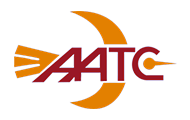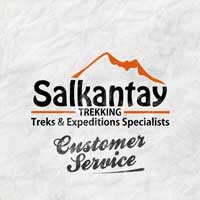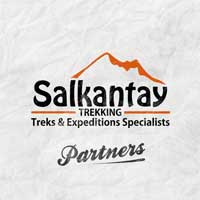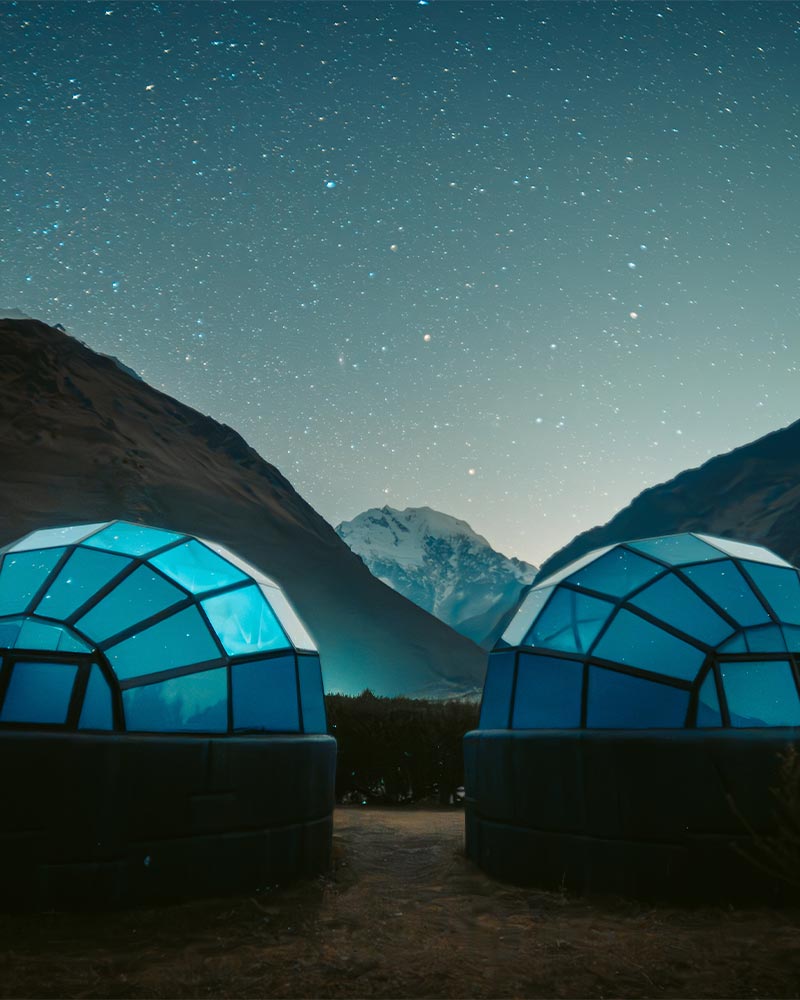Inca Jungle Packing List — Everything You Need
Are you looking to escape the large crowds and head out on the adventure of a lifetime? The Inca Jungle Trek awaits you with some thrill-seeking activities and unforgettable experiences.
If you’ve already booked this incredible route, we’re sure you’re eager to get going and enjoy what the astounding Andes has to offer.
But, wait! You don’t want to leave the city to find out you’ve forgotten an essential piece of equipment. That can put a real downer on your trip.
Fear not. We’ve traveled this route thousands of times and know exactly what you need to take with you.
You won’t need as many “warm” clothes as you do for other treks. You don’t spend much time at higher and colder altitudes—instead you’ll be in a warm and humid climate.
Below, you’ll find detailed descriptions of every single piece of kit you need to enjoy a safe and successful trekking tour. These are our personal suggestions on gear that we own and use to trek comfortably every time. We believe these recommended items of gear provide the best value for money and deliver the best performance.
Without further ado, let’s start our ultimate Inca Jungle Trek packing list.
Are you looking to escape the large crowds and head out on the adventure of a lifetime? The Inca Jungle Trek awaits you with some thrill-seeking activities and unforgettable experiences.
Below, you’ll find detailed descriptions of every single piece of kit you need to enjoy a safe and successful trekking tour. These are our personal suggestions on gear that we own and use to trek comfortably every time. We believe these recommended items of gear provide the best value for money and deliver the best performance.
Without further ado, let’s start our ultimate Inca Jungle Trek packing list.
The Essential Packing List for the Inca Jungle Trek
Documents
Original Passport
Not only will you need your passport to get into Peru. You also need to take it on the Inca Jungle Trek. Your hike ends at the World Wonder Machu Picchu, and you won’t be allowed into the site without your original passport. Ensure your entrance tickets have the exact passport details on them, or this can also cause issues.
Backpack and Duffle Bag
Backpack
On all our treks, we’ll carry the duffle bag for you, but you still need to take a lightweight backpack to carry the daytime essentials like snacks, water, camera, sunscreen, etc.
We advise you to take a backpack with compression straps to lessen the weight stress on your back, and side mesh pockets for easy access to your water bottle. The Osprey Talon is our favorite backpack.
It’s vital you take a rain cover for your rucksack as you never know when there’ll be a downpour in the Andes. If you decide to use an Osprey backpack, then make sure you get an Osprey Raincover that’s the same as the bag size for a snug fit.
Duffle Bag (included in the service)
The night before you set off on your trek, you’ll have a briefing where you’ll meet the guide and learn more about the ins and outs of your trek. We’ll also give you a duffle bag here to fill with all your belongings. You’re allowed up to 7 kg/15.4 lbs weight allowance per person.
We will carry your duffle bag for you together with the food and camping gear along the entire route. It’s important to note that you won’t have access to your items in the duffle bag until the end of each day at the campsites—the transport with the duffle bags will always be in front of the group.
During the day, you need a backpack big enough to carry your personal belongings—a warm jacket, raincoat, camera, sunscreen, snacks, water, etc. A 30-liter backpack is usually adequate.
Clothing
Underwear
Possibly the most important piece of clothing is your underwear. You need breathable sports undies to help you stay comfortable while hiking.
We’re huge fans of Icebreaker underwear, Adidas sports underwear, or Under Armour underwear, as these brands focus especially on manufacturing products that can deal with sweat from high-intensity exercise and sports.
Trekking Shirts
Make sure you take enough trekking shirts to last you the duration of the hike. These shirts are super breathable and comfortable for high intensity activities. We recommend these breathable and lightweight shirts from Hanes. Alternatively, shirts from Icebreaker or Columbia are also of great quality.
We don’t suggest you take cotton shirts as these absorb moisture and can mean you feel very uncomfortable. We prefer long sleeved shirts to help protect you from the bugs.
Hard Shell Jacket and Rain Gear
In Peru, you NEVER know when the heavens will open and it will start to rain. It can rain any day of the year, but is much more likely during the wet season (Oct–Mar). You should bring a hard-shell jacket for ultimate protection when it’s wet, like the North Face Resolve Jacket.
It’s also worth taking a compact rain poncho that can quickly be put on should you encounter a light downpour.
Fleece Jacket
The first morning of the trip is cold, as you’ll start above 4,000 masl in the middle of fog. TO keep you warm and insulate your body, we recommend a Polartec 200 Fleece Jacket. These insulation jackets are extremely good for hiking as they provide a magnificent warmth to weight ratio whilst allowing effective moisture transfer.
Recommended fleece brands included Helly Hansen, The North Face, and Patagonia.
Trekking Pants and Shorts
Make sure you pack some comfy trekking pants and shorts. You’ll like shorts in the heat but may also want pants to keep bugs at bay. There are many brands to pick from, but we recommend Craghoppers, Columbia, or O’Neills.
You may even want to go with convertible pants like this trekking model designed by Craghoppers. Not only will they save you money as you won’t need to buy shorts, but they are also very comfortable and easy to convert from one to the other.
Pajama Pants
In the evening, you want to unwind after a long day on the trail and relax in ultimate comfort. We recommend you take one of your favorite pairs of sweatpants or pajama pants for the accommodation and to keep you cozy in bed.
Gloves
Gloves act as a shield from the cold and need to be warm, waterproof, and durable. This is especially necessary on the first morning while you ride bikes. Gore-Tex gloves from Dakine or similar options from The North Face, Outdoor Research, or Black Diamond are recommended.
Headgear
Hat for Sun Protection
It’ll come as no surprise that the sun is super strong at this high altitude. You should pack a hiking hat that gives your face and neck plenty of protection.
Your hat should be light and easy to bend/fold so that it can fit into your backpack or rucksack. Trekking hats with a neck cover are great to give you ultimate protection.
Headband or Beanie
For the Inca Jungle Trek, this isn’t a necessity, but the first morning is cold and you’ll be rushing downhill on a bike. The wind can feel cold on your ears. Berghaus and The North Face provide some fantastic beanies.
Footwear
Hiking Boots
THE most essential trekking item is your hiking boots. After all, they’re how you get from A to B. Badly fitting hiking boots tend to end with damaged toenails, painful blisters, and all-around sore feet. That’s no fun for any trekker!
To find the best fit, put your foot in a boot without tying the shoelaces. Once in, slide your foot all the way forward until the toes hit the front of the boot. You should be able to put your index finger down the back of the boot between your heels. If your finger has lots of room to move then the shoe is too big, but if you struggle to get your index finger into the boot then the shoe is too small.
Here are some of our favorite reliable brands of the best hiking boots: Scarpa, Salomon—we like the Quest range—, Berghaus—we like the Explorer range—, Hi-Tec, and Karrimor.
Sneakers (Trekking Shoes/Sandals)
After hiking across rough terrain all day, the first thing you’re going to want to do is to change into a comfortable pair of shoes. We recommend packing trekking shoes, sneakers, or sandals. We like Merrel trekking shoes, and trekking sandals are perfect to wear with warm socks for optimum comfort.
Hiking Socks
To keep your feet comfortable and not sweaty or hot, you’ll need hiking socks and high-wicking sock liners.
We recommend Coolmax hiking socks as they provide excellent breathability and have fantastic wicking properties. Smartwool, Bridgedale, and Point 6 also make great socks.
Don’t bring cotton socks—these lead to nasty blisters and sweating.
Gaiters
When biking or trekking, gaiters come in very handy. Gaiters are made from waterproof material and extend up from your boot to the top of your calf.
Gaiters are used to stop water, dust, mud, snow, ice, and small stones from getting into your hiking boots, which can become very uncomfortable.
Sleeping Bag
Sleeping Bag
For any of our treks, you’ll need to pack a warm and comfy sleeping bag.
The best types of sleeping bags are made using a duck or goose down, but they also tend to be the most expensive. If you’re stretched for cash, a warm synthetic alternative is fine.
Look out for a sleeping bag that has a mummy shape with an insulated hood and draw cord so that it fits the contours of your body. Two-way zippers for better insulation are great.
We recommend the following brands and models: The North Face Snow Leopard, Marmot Trestles, Mountain Hardwear Phantom Highlander, or Coleman.
Important Accessories
Trekking Poles
This item is especially ideal for those who feel pressure on their joints. High-quality walking poles can reduce the force on your knees and other leg joints by up to 20 percent. Trekking poles are fantastic for descending, as the load on your joints increases tenfold when walking downhill.
We recommend getting light-weight (around 350 grams per pair) and adjustable trekking poles, as they’re easy to store and super versatile. Black Diamond walking poles are wonderful, as are Leki poles.
Sunglasses
We’ve already mentioned the strong sun in Cusco and the UV rays that come off it. You should bring a quality pair of UV protection sunglasses (minimum of 80% light reduction). We suggest some mountain sunglasses from Julbo.
Flashlight or Headlamp
Don’t worry, you won’t be setting off on the trail during the night, but you might need to pop to the bathroom or enjoy reading before bed. Extra lighting is especially useful at the campsite.
Petzl Tikka is the top headlamp brand. Don’t forget to bring spare batteries as well.
Water Bottle or Hydration Bladder
At high altitude and in warmer climates, it’s far easier to become dehydrated. You need to drink between 2 and 3 liters of water a day. Heatstroke and dizziness are prevalent among dehydrated trekkers and could mean you miss out on the rest of your hike.
Water can be taken in a standard water bottle (not plastic)—we recommend getting 2 x 1L CamelBak Water Bottles.
Or, if your daypack includes space for a hydration bladder, then the 2L Platypus Hydration Bladder is an excellent product.
Camera
The scenery along the Inca Jungle Trek is out of this world! You’ll definitely want to capture your experience in HD, so if you don’t have a quality camera, now’s the time to get one.
Here are some of our top affordable Digital SLR cameras. Remember, you want to make sure your camera is light but still able to take high-quality images. We like the Panasonic Lumex. If you’re more inclined to take videos, then you might want to consider the GoPro.
Notebook/Journal & Pen
This isn’t a necessity but is a great way to chronicle your trek so you remember every last detail.
Personal Gear and Medication
-
Swimsuit
If you plan on taking a dip in Aguas Calientes hot springs, this is a must.
-
Trekking Towel
A small to medium-sized hiking towel can come in very handy. LifeVentures or Discovery provide good, quick-drying trekking towels.
-
Cash
Along the route, there are spots to buy snacks and water. It’s also a great idea to have extra cash (S/300–S/400) in case of an emergency.
-
Toilet Paper
You might need to go to the bathroom during the day. You’ll need toilet paper as most toilets don’t usually provide this.
-
Portable Power Pack
Although there are opportunities to charge devices on some treks, a portable power is a great idea so you can charge anytime, anywhere.
-
Small Locks
To protect your belongings in your rucksack or duffle bag.
-
Waterproof Ziplock Bags
These come in handy for storing important/valuable items like your money, passport, and electrical equipment
-
Isotonic Powder
Can be used to flavor your water and helps replace electrolytes, improving energy levels and aiding water absorption.
-
Diamox
Also known as acetazolamide, this is a medication that can be used as a prophylactic (preventative) solution for altitude sickness. It does not cure altitude sickness and should never, therefore, be used as a method to continue ascending to high altitudes. It can, however, help prevent the onset of altitude sickness and is commonly used by high altitude climbers and trekkers.
-
General Medications
We recommend taking paracetamol or aspirin for headaches and Imodium for diarrhea.
-
Basic First Aid Kit
If you’re joining an organized trek, your guide will most likely be carrying a first aid kit. If you’re hiking unsupported or independently then a first aid kit is a must.
-
Sunscreen/Lip balm
No one wants burnt skin or cracked lips. Be sure to bring 1 x sunscreen (SPF 50+) and 1 x lip balm.
-
Bug Spray/Repellent
As you get closer and closer to Machu Picchu, you’ll come across more bugs that like to bite! You’ll need this to keep them away.
-
Baby Wipes/Body Wipes
For quick and easy wet washes when no showers are in sight! Bring 1 x baby wipes or body wipes.
-
Blister Plasters
The dreaded blisters! We recommend taking Compeed blister plasters
-
Hand Sanitizer
Great for disinfecting hands before and after eating, or when they get dirty during the hike.
What to Pack in Your Backpack
One of the important items you need to take is your day pack or backpack. You’ll need to pack the necessities you’ll need during the day here. What should you put it in? The following:
- Rain jacket/poncho
- Fleece
- Sunhat/beanie
- Water bottle
- Bug spray
- Sunscreen
- Personal medication
- Toilet paper
- Cash
- Passport
- Camera
Find the Perfect Destination in Peru
With astonishingly varied landscapes, stunning scenery, compelling history, and a legacy of fascinating cultures, there is truly something for everyone. Our expeditions in Peru are designed to showcase all that this country has to offer.
Our expeditions in Peru are designed to showcase all that this country has to offer.











